Disclaimer: This website contains affiliate links, from which Heritage Acres Market LLC may receive a small commission from the vendor on the sales of certain items, all at no cost to you. Please read our full disclosure for more information. Thank you for supporting Heritage Acres Market LLC!
The Plymouth Rock chicken is one of the oldest American breeds and also one of the most popular. These dual-purpose chickens make practical additions to your flock.
They are also one of the sweetest chicken breeds you can find. Many owners talk about their Plymouths following them around while they work and enjoying being held and stroked.
Is the Plymouth Rock right for your flock?
- Dual-purpose heritage breed that is great for egg or meat production
- Friendly chickens that are good with kids
- Lays about 250 large brown eggs each year
- Heat and cold tolerant
In this article, we talk about these chickens’ background and how they became an American staple. We cover the behavior you can expect from this docile breed, appearance, health, and purposes. Finally, once your interest is piqued, we provide some resources to help you find and add Plymouth Rocks to your flock.
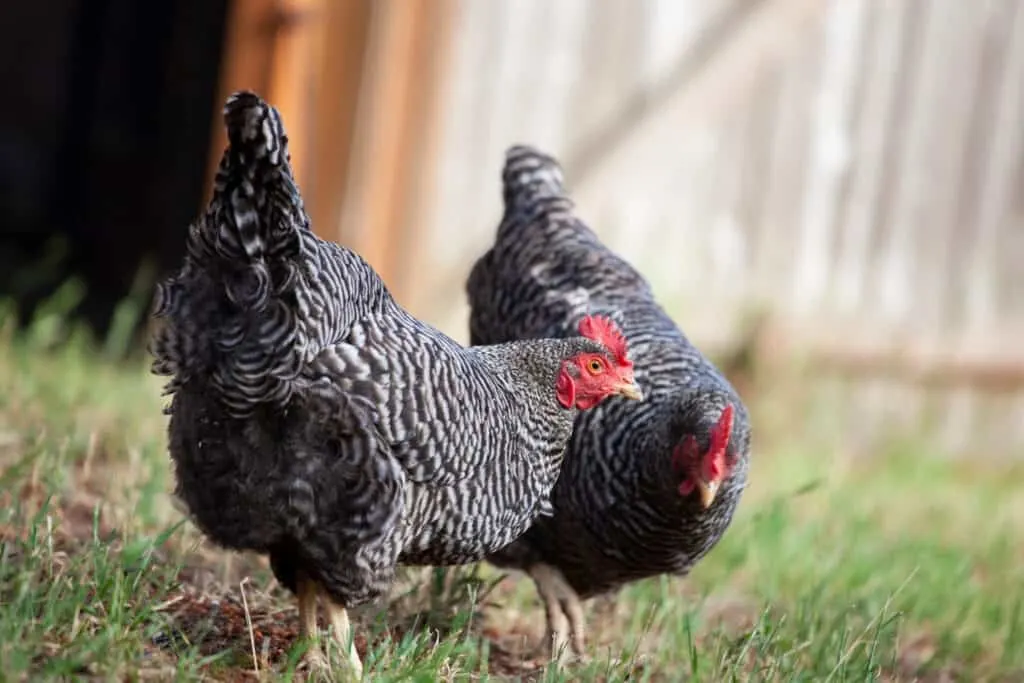
Table of Contents
Background & History of the Plymouth Rock Chicken
You might be able to guess from its name that the Plymouth Rock Chicken is one of the oldest chickens kept in America. These chickens were named after the famous landing place of the Pilgrims when they first came to America and were one of the first established heritage breeds.
Early Development
Plymouth Rocks were developed in the mid-1800s. There are currently seven color varieties, but the Barred Rock Plymouth was the most popular from the beginning. They were accepted as the breed standard in 1874.
For unknown reasons, the breed entirely disappeared for 20 years, reappearing in 1869 and sticking around to become one of America’s sweetheart chickens.
Many people claimed to have developed these birds back in the 1800s, and no one has been verified. However, researchers today think that the first Plymouths were developed from Black Java and Dominique chicken lines.
The Plymouth Rock chicken is one of the older American breeds. However, it wasn’t always so popular and has gone through ups and downs among American society’s chicken keepers. The Livestock Conservancy now classes these birds as “recovering” thanks to their renewed notoriety.
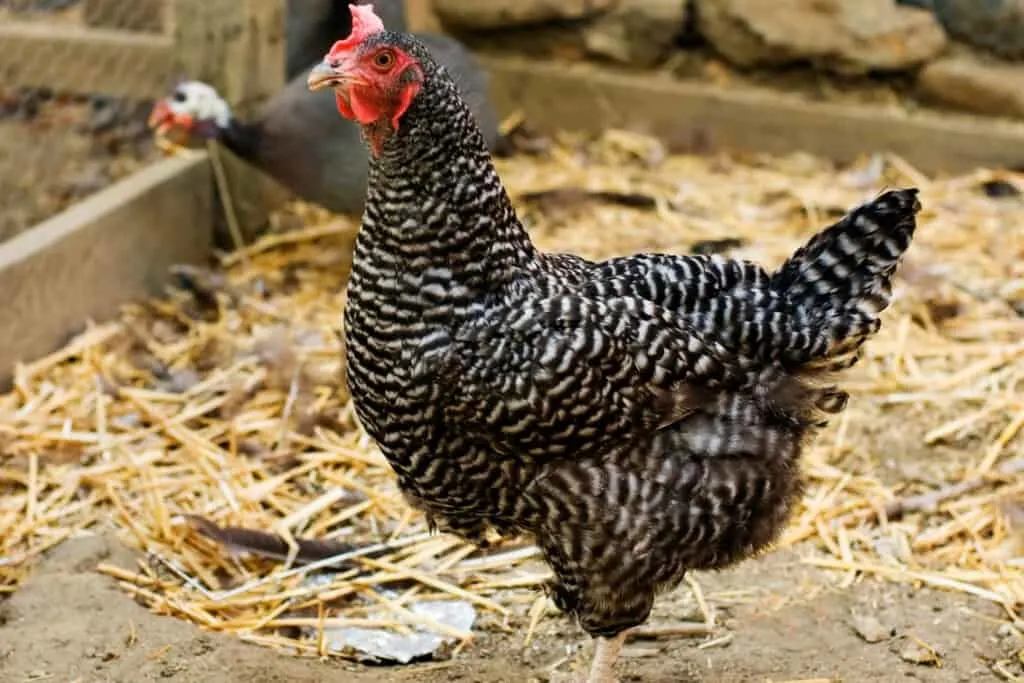
World War II
They were the most extensively bred chicken breed in America until World War II due to their outstanding qualities, making it a sought-after farm chicken. The government even encouraged their breeding because of their large egg output and meaty bodies that could offset rations in the war’s worst times.
However, after and during the war, new breeds were introduced. The chicken production industry labeled Plymouths as unfit to meet the modern market’s requirements even though they have a select variety of chicken meat and egg production.
Modern Homesteading
With the growing trend of keeping chickens personally at home or on a homestead, the Plymouth Rock chickens have found a renewed level of demand. The Barred Plymouth Rock is the most popular color variety of the Plymouth, having beautiful plumage of black and gray bars on each feather.
These chickens are suitable for beginners and for those that are raising chickens as a family homestead. Their laid back nature and general lack of noise make them a gentle “break-in” breed as you begin a flock.
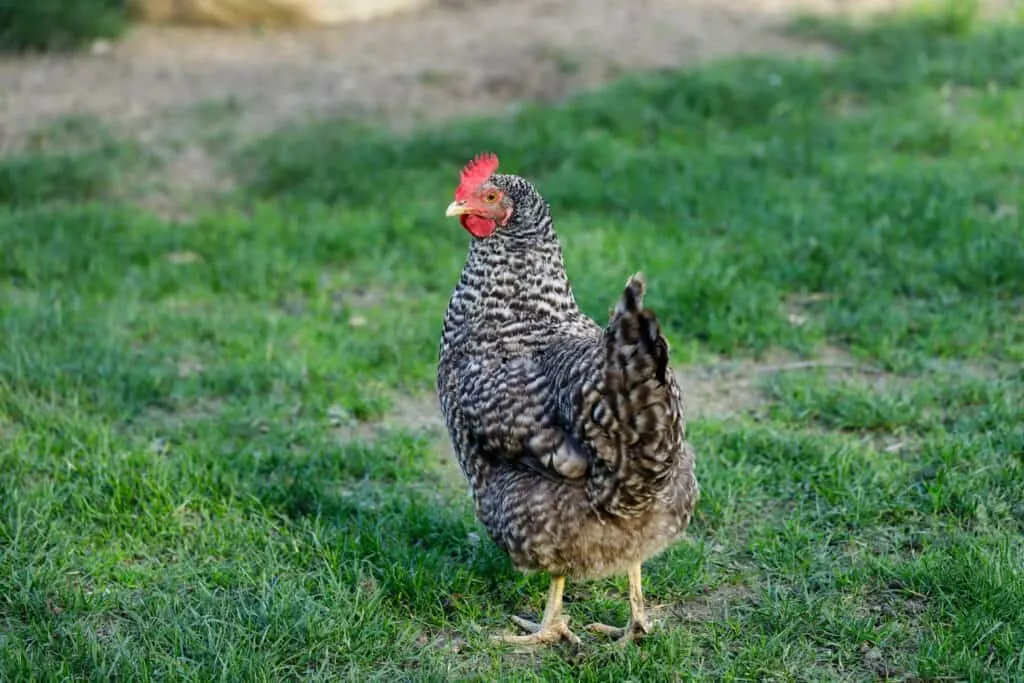
Temperament & Behavior
Plymouth Rock’s personality is one of its most winning characteristics beyond its high-quality, dual-purpose production. These naturally curious creatures can quickly become your feathered friends.
The Plymouth Rock chicken is one of the most docile chicken breeds to raise. With a bit of patience, they rarely get flighty around humans, particularly those they recognize.
They are a good choice for adults beginning to keep chickens and the kids of a family since they perform well around all ages.
Overall, although they are still active for chickens, they have a sweet, docile personality. They have been known to become lap chickens, follow their keepers around, and enjoy getting stroked and attention from you.
Plymouth Rock hens are quite likely to go broody. They aren’t known for their exceptional broodiness, but their tendency is towards it.
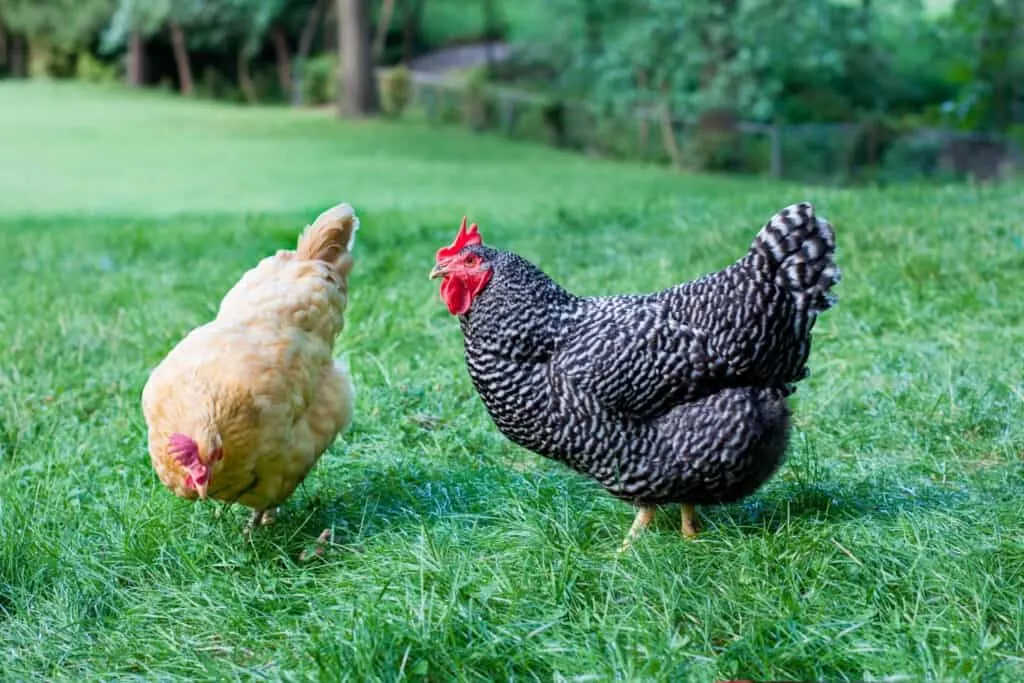
If they go broody, they are great mothers, and you won’t have to worry about the chicks wellbeing. Otherwise, you can always use an incubator.
These docile and loving chickens tend to prefer being kept in smaller flocks. The noises they make often sound closer to a “coo” than louder clucking common in other breeds, such as the Minorca chicken.
It is easy to keep a Barred Plymouth Rock chicken in a smaller area or a legalized neighborhood without causing a stir.
These chickens are not known for picking fights with other birds in their flock, even different breeds. They are assuredly lovers, not fighters.
Overall, Plymouth Rocks are considered a pleasure to own since they enjoy much more human interaction than other breeds and tend to get along with other chickens in their flock. Even the roosters are known for their relative docile nature.
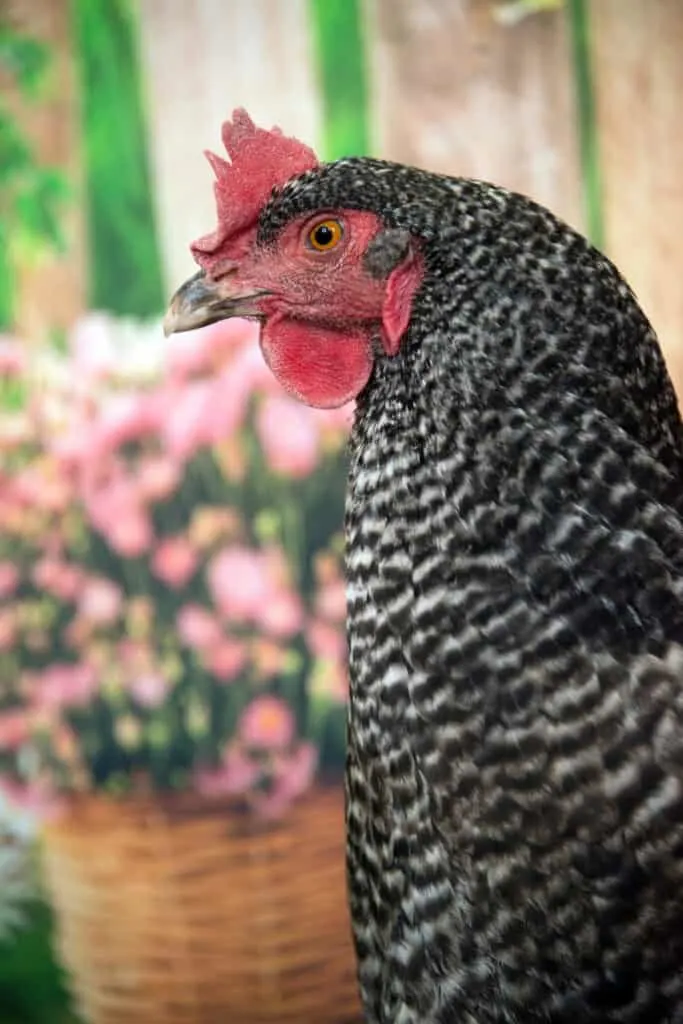
Plymouth Rock Chicken Breed Specifics & Traits
Purposes of the Plymouth Rock
Looking beyond a Plymouth Rock chicken’s winning personality, they are also very useful chickens.
Plymouths are dual-purpose chickens, beneficial for both their egg-laying and meat production instead of one or the other. They lay superior quality, large brown eggs.
Part of the Barred Plymouth chicken’s dismissal was its supposed inability to meet Americans’ high production demands. Not only that, but pure white eggs have become the accepted standard, and Plymouths lay brown eggs.
Another one of the reasons for their dismissal by the poultry industry was their dependability to produce eggs over their entire lives. A Plymouth Rock hen will do very well in its first three years of life. After that, their egg production tends to steadily decrease until they die.
Luckily for these chickens, brown eggs produced from chickens that haven’t been “improved” have a niche market to themselves.
Plymouth Rock chickens don’t only make good layers. They are also considered a heavyweight chicken, with males weighing almost 10 pounds. These large bodied birds are excellent meat chickens.
There is a bantam version of the Plymouth Rock chickens that was developed in the early 1900s. However, these are not as popular as the full-sized chickens and are harder to find. Even the Plymouth Rock Bantam has a larger body than most other bantam chickens.
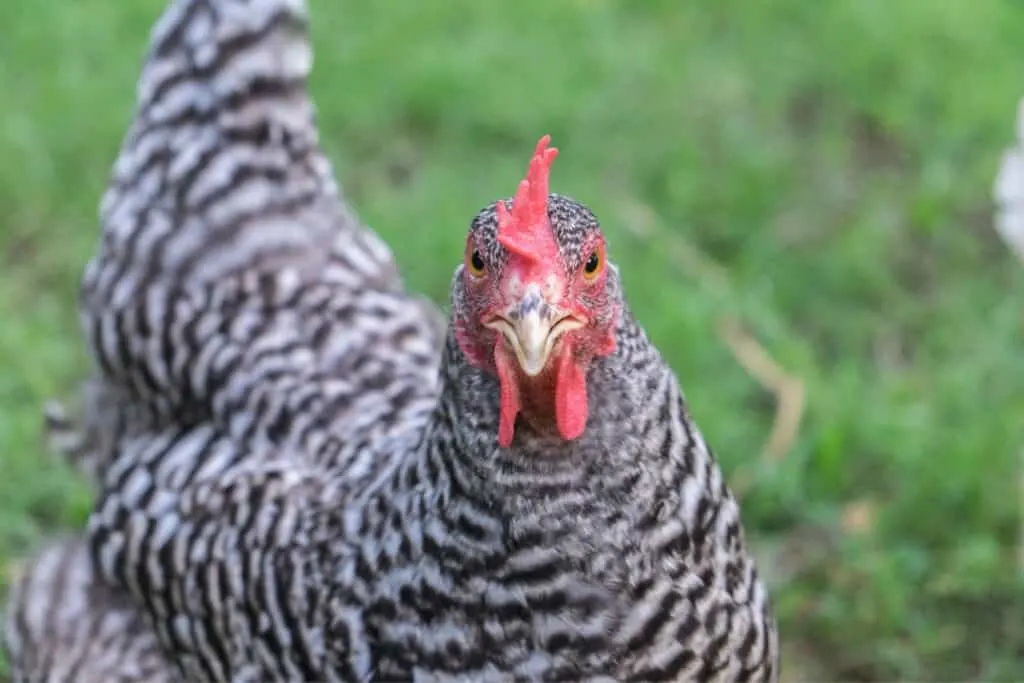
Size and Appearance of the Plymouth Varieties
The standard weight of a Plymouth Rock rooster is 9.5 pounds. The hen’s standard is 7.5 pounds.
Plymouth Rock chickens have been a well-maintained breed from the beginning and have an excellent genetic pool to draw from which they are bred. It is due to this genetic pool that they are known for being long-lived birds. On average, a Plymouth will live around six years, although some Plymouths may live to be older if they are kept as pampered pets than farm chickens.
There are seven varieties of Plymouth Rock Chickens. These include:
Underneath this variety of plumages, they all have yellow skin. The Barred Plymouth Rock (also called Barred Rock) is the most common, with the White Plymouth following behind by quite a ways.
The barring on many of these color varieties comes from a dominant sex-linked gene. The gene prevents pigment from being expressed on colored plumage and creates light bars on the originally dark black feathers.
Roosters usually are lighter in color than hens because they carry two copies of this gene while the hens only have one.
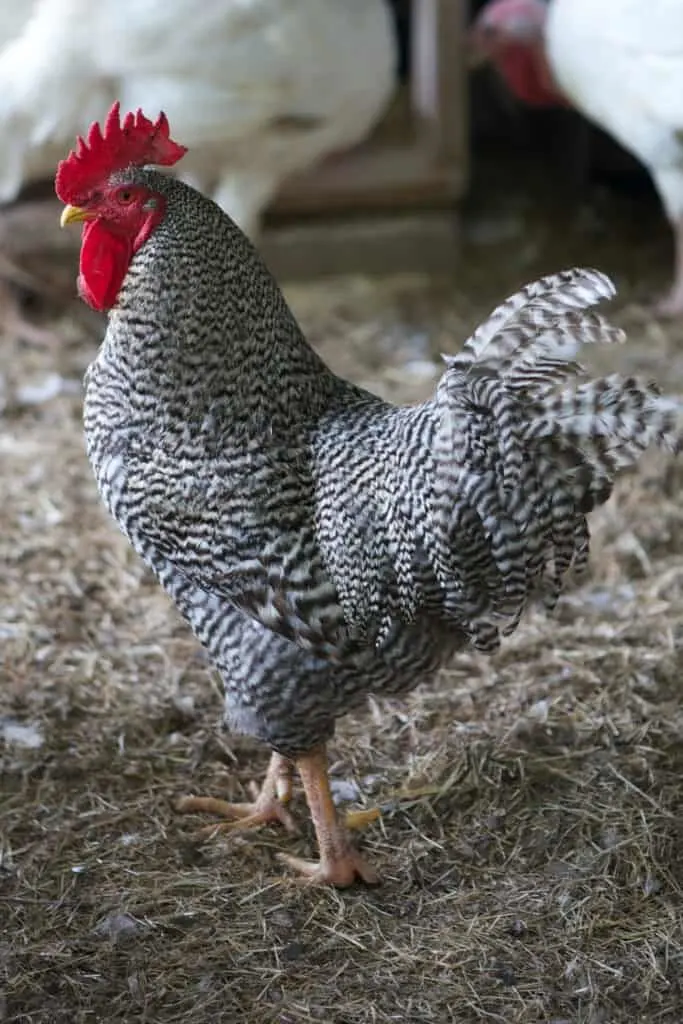
Other than the Plymouth Rock’s barred plumage, other noticeable characteristics are their bright yellow legs and feet contrasting against the dark feathers.
They have a single comb with five serrated points dispersed evenly across them. The middle points are often the tallest, with the front and back points being shorter.
Their comb, wattles, face, and earlobes are all bright red.
The appearance of the chicks varies depending on their plumage variety. They are early-feathering birds, and most of the chicks have yellowish plumage under their beaks and stomachs, with shades of black and gray covering the rest of their body.
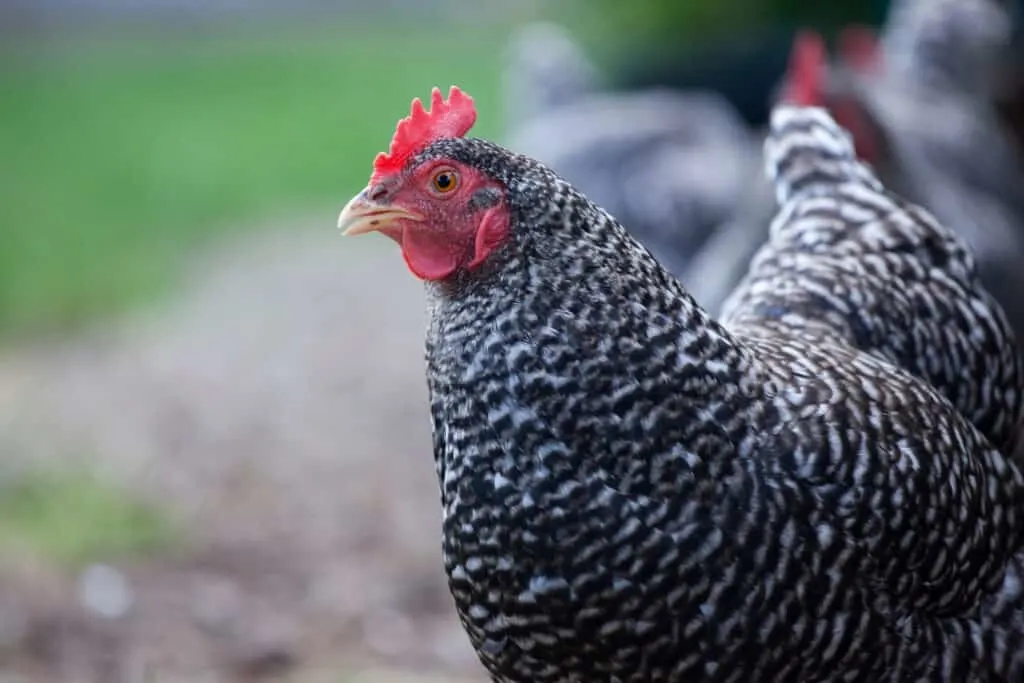
Hardiness and Health
The Plymouth Rock chickens are a low-maintenance breed overall. They tolerate cold weather conditions and heat quite well.
Although these birds are very friendly towards people they know, they can be extremely flighty around other animals or people close to their coop.
These beautiful birds are also quite healthy. They are relatively prone to dealing with intestinal parasites, but this can often be easily remedied and even more easily prevented.
Other illnesses to watch out for include:
- Vent Gleet
- Vent Prolapse
- Bumblefoot (Pododermatitis)
All of these are treatable so long as they are caught in time. If you notice a sudden decrease in a hen’s egg-laying capacity, carefully look them over to assure their health.
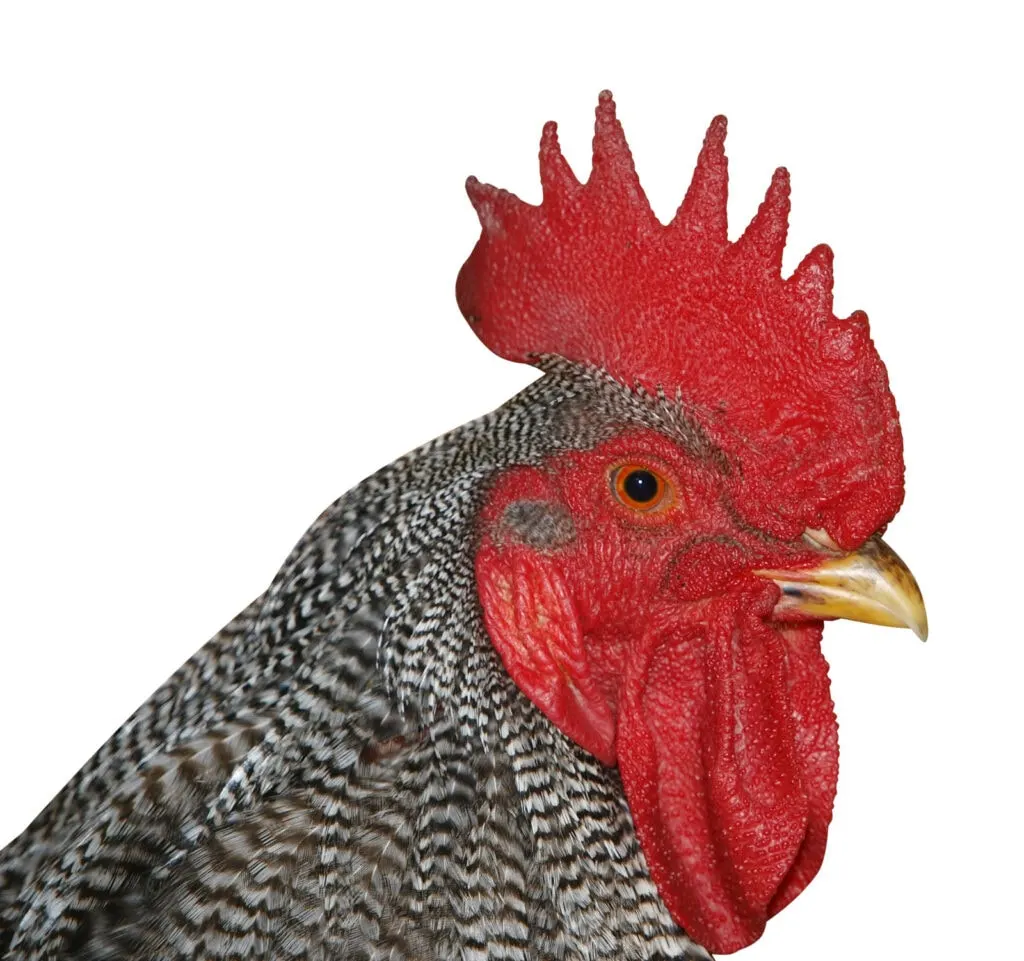
Eggs
Plymouth Rock chickens mature at an average pace compared to other typical domesticated breeds.
Hens can begin to lay eggs between 18 and 20 weeks of age. Their eggs are shades of soft, light brown, and considered a “large” size.
Plymouth hens can lay anywhere from 200 to 300 eggs each year. On average, they lay closer to 230 eggs each year. You can expect these chickens to produce about four eggs each week.
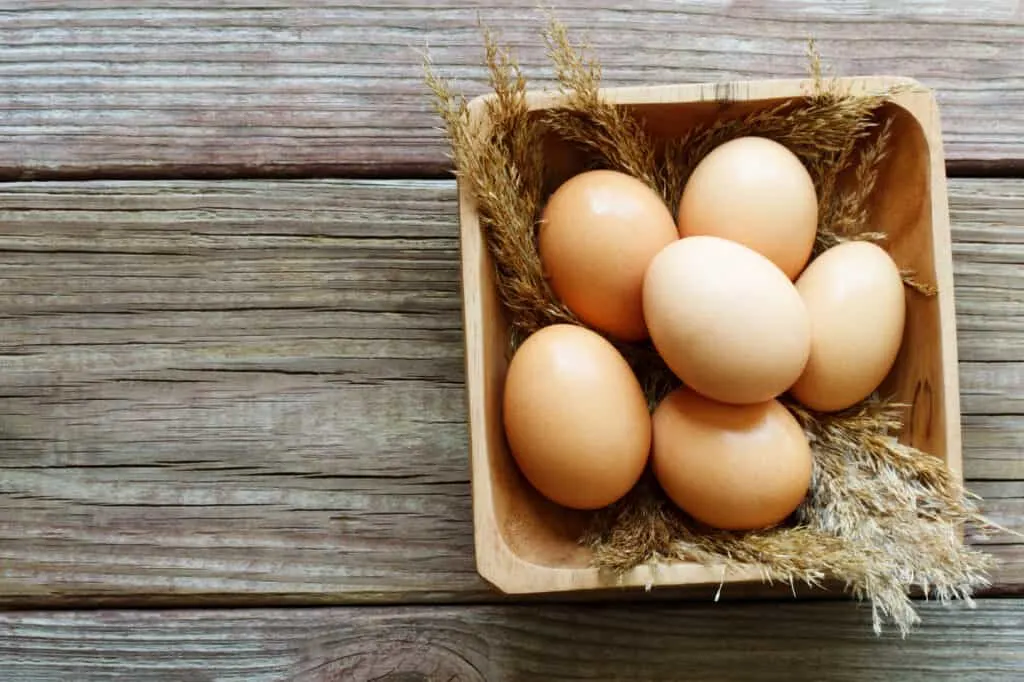
Plymouth Rock Chicken
| Type | Meat and Eggs |
| Size | Heavy |
| Heritage Breed | Yes |
| Average Weight | Female: 7.5 lbs; Male: 9.5 lbs |
| Weeks To Maturity | 18-20 weeks |
| Average Life Span | 8-10 years |
| Color variations | Barred, White, Buff, Partridge, Silver Penciled, Blue, Columbian |
| Egg Size | Large |
| Egg Color | Brown |
| Egg Production | 200-300 per year |
| Dual Purpose | Yes |
| Temperament | Friendly and docile |
| Beginner Friendly | Yes |
| Kid Friendly | Yes |
| Heat Tolerant | Yes |
| Cold Tolerant | Yes |
| Comb Type | Single |
| Broodiness | Medium to High |
| Flightiness | Low |
| Noise Level | Medium |
| Unique Traits | Prefer small flock sizes |
Where to Buy
Plymouth Rock chickens have become an iconic staple of American culture and make an excellent all-around homesteading chicken.
You can find chicks and eggs sold at almost any hatchery.
On average, a pullet costs between $10 to $15 from a hatchery.
Hatching eggs from any variety will cost about $4 each, often with discounts available for bulk orders.
The cost of a chick depends on the variety. Day-old Heritage Barred Plymoths and White Plymouth Rock chicks cost about $3.
You can find Plymouth Rocks for a very affordable price at Cackle Hatchery.
Cackle Hatchery is our preferred and recommended hatchery. While most hatcheries require orders of at least 25 chicks, you can buy as few as 3 chicks from Cackle. They are also highly rated on Google and have been in business since 1936.
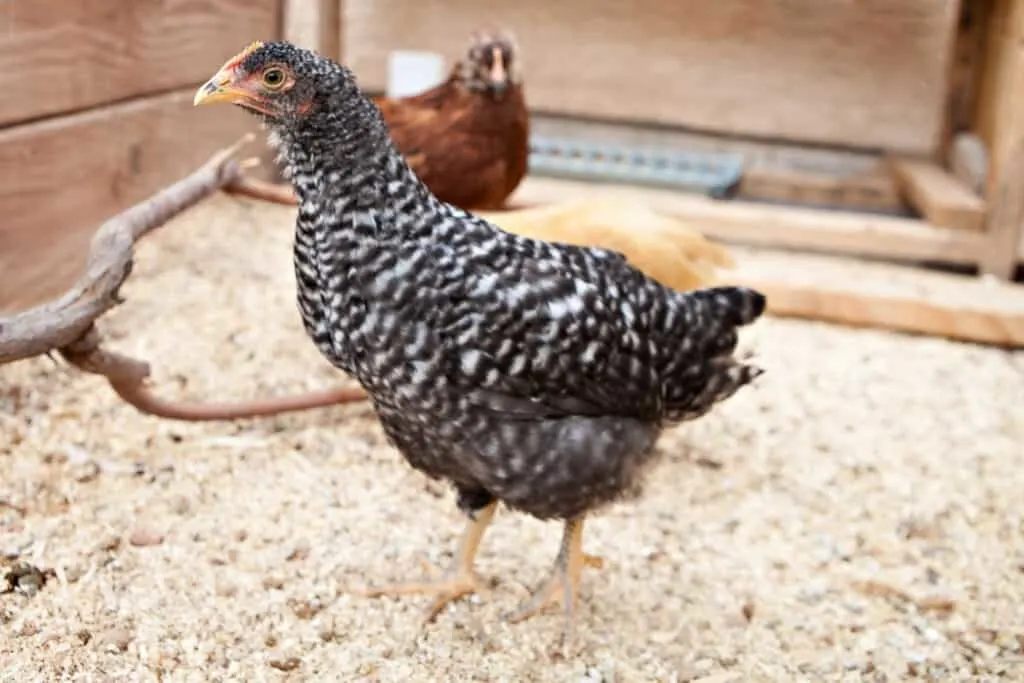
Summary
Overall, you can expect great things from the Plymouth Rock Chicken from almost any perspective. Their biggest downside is the hen’s inability to consistently lay as they age, which is typical for most chicken breeds. Otherwise, their friendly, easygoing personalities make them great for beginners, families, and those living in crowded areas.
If you are primarily interested in their usefulness, you should still be pleased with a dual-purpose chicken. Plymouth rock chickens lay large eggs and provide close to the maximum amount of meat that an “unimproved” chicken will. All things considered, they are worth more than a second look as you start your chicken flock or continue to enlarge it.

भाऊसाहेब गायकवाड
Sunday 4th of September 2022
Plymouth Rock कोंबडीची माहिती उपयुक्त आहे पण ती खरेदी कुठे करता येईल ते सांगावे